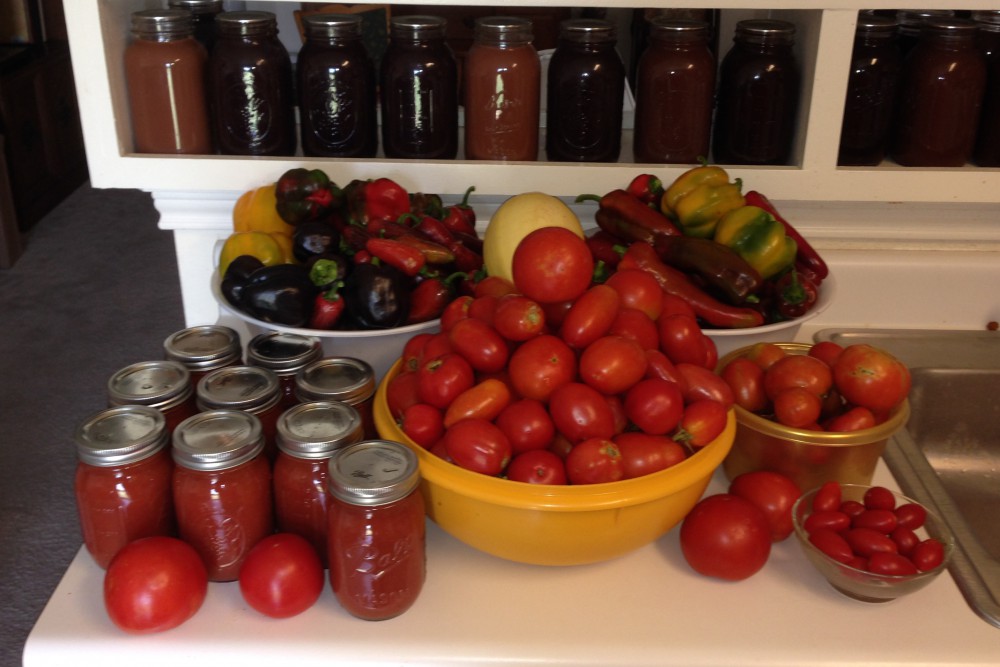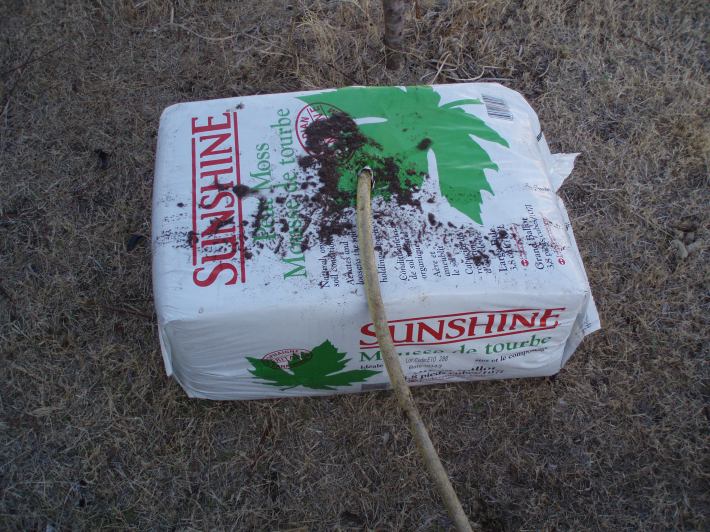In my vegetable garden, I still have indeterminate hot season tomatoes that are producing and my peppers, okra and cucumbers are doing well. They are doing well because I hand water them daily in the evening and I applied regimen of a deep soak of fish emulsion/kelp/epson salt solution at the base of my plants with alternating applications of a kelp foliar spray. (I buy all my ingredients at Bloomer’s my local nursery/garden center in Elgin, TX)
Here is a truth: Container and raised bed gardens suck the nutrients out of the soil. So for most of the year I augment my plant’s needs with a solution of fish emulsion, kelp and epsom salts. I will tell you how my recipe and how I use these at the end of this blog, but first let’s discuss why a gardener needs to use both when caring for his garden. Most gardeners know about the macronutrients that are important to their plants health: nitrogen, phosphorous, potassium, magnesium, calcium, and sulfur. On most packages we see them listed in the order of the primary three nitrogen -phosphorous – potassium. However most of those fertilizers do not include the micronutrients that plants need as well in much smaller quantities improving the health growth of your plants and also help your plants stave off garden pests and diseases.
Granular fertilizers are slow to be taken up by the plant, so if you apply granular fertilizer at the first sign of your leaves turning yellow, by the time the plant takes up the nutrients it may well be too late. Liquid soluble fertilizers offer a much more efficient and timely way of getting nutrients to your plants. Plants are capable of taking in the nutrients they need through their leaves as well as their roots. Whereas deep soaks will provide a ready supply yet at a slightly slower up take of nutrients, foliar sprays work quickly to give your plants the micronutrients they need, and often in just the nick of time.
Fish emulsion is an organic water soluble, fast-acting fertilizer that contains about 5% nitrogen 1% phosphorous and 1% potassium. Fish emulsion is fast acting which means that the plant can use the nitrogen right away. However because fish emulsion is fast acting in providing quick nutrients to your vegetables this means you will need to apply it ever 2-3 weeks. Note: Fish emulsion does have a pungent fish smell, so I do wear gloves when preparing it so as not to have that smell on me the rest of the day.
Kelp/Seaweed extracts contain small amounts of nitrogen, phosphorus, and potassium, however but not in enough quantities that plant need. What Kelp/Seaweed extracts contain that the plants need are strong concentrations of trace minerals, micronutrients, amino acids, and vitamins essential to plant growth. In addition kelp/seaweed extract contains many growth hormones which stimulate cell division and larger root systems.
In order to accomplish the optimum results for your plant’s needs, you will need to combine two products to fully provide your plants with the nutrients the plants need. In both instances a solution both fish emulsion and Kelp/Seaweed extracts can be applied as a foliar spray or as a soil soak and Kelp by itself is an excellent way to reduce transplant shock.
THE RECIPE:
I use the following mixture: For each gallon of water: 2 T Kelp, 2 T Fish Emulsion, 1 T Epson Salts.
APPLICATION:
I do a deep soak by pouring this solution in the center of my raised garden bed every two weeks. Sometimes I will alternate the deep soak with foliar application. I primarily like to do a deep soak by pouring this solution in the center of my raise garden bed every two weeks. If you want to do this weekly, you need to make your solution half strength or you run the potential of damaging your plants.
In the dry hot of the late Texas summer I find that the use of fish emulsion as a foliar spray tends to cause leaf burn following the directions on the leave. This is why during this time of the gardening year I use the fish emulsion/Epson salt mixture as a deep soak for my plants one week and I apply the seaweed as a foliar spray the following week. Then I give one week rest and resume the same application cycle again. Remember to spray foliar sprays either early in the morning or late in the evening to avoid evaporation as you spray and also any leaf burn from the hot afternoon sun. It is very important to use recommended rates because these extracts are so potent.
For more information on the products I use
Alaska Fish Fertilizer 5-1-1 Concentrate







